Sally Metzler
Chicago, IL, USA
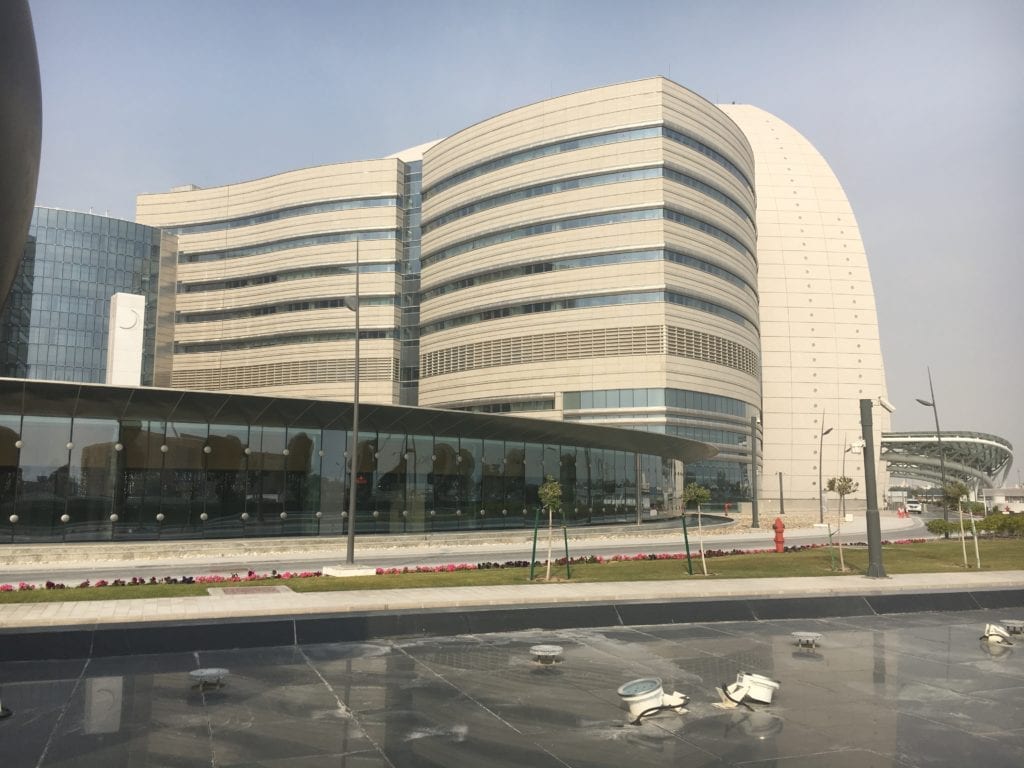
Amazing, inspiring art and architecture seem to appear almost daily in Doha, Qatar, the host city of the 2022 World Cup. The Sidra Hospital for women and children soars among the many shining examples of architecture throughout this small Middle Eastern Gulf country. The building is graceful and sleek. Interior gardens and a mosque complement the facility and lend a calming and spiritual aspect. Architects Cesar Pelli of Pelli Clarke Pelli and the firm of Ellerbe Becket conceived the Sidra Hospital with functional and symbolic intent. White curving blocks intersect the primary structure, evoking the sails and overall form of the traditional ancient Arabic ship, the dhow.
Sidra Hospital opened in January 2018 under the sponsorship and vision of Her Highness Sheikha Moza bint Nasser. The namesake of the hospital is the sidra tree, an iconic symbol for Qatar as the embodiment of perseverance and endurance. Revered for its power to flourish in harsh desert climates, the sidra tree also appears as the logo of the Qatar Foundation, of which Her Highness Sheikha Moza bint Nasser is the chairperson.
Matching the ingenuity of the hospital structure is an ambitious public art installation by the world-renowned artist Damien Hirst. Commissioned by Her Excellency Sheikha Al-Mayassa bint Hamad bin Khalifa Al-Thani, the installation fronts the Sidra Medical complex, and forms a series of fourteen giant bronze sculptures called The Miraculous Journey. Rising above a long reflecting pool, the monumental bronze sculptures catch the eye from the distant highway, often pulling drivers to inadvertently take the hospital exit in order to witness the extraordinary exhibition.
Damien Hirst’s The Miraculous Journey narrates the story of life from conception to birth. For children and adults alike, the sculptures graphically yet tastefully relate where babies come from and how they develop in the womb. Hirst has fashioned the fertilized ovum, a breech, and a twin pregnancy, and the exhibition culminates with a forty-six foot tall bronze statue of an anatomically correct baby boy. Hirst remarked that his Miraculous Journey came from “a desire to create something monumental, whilst essentially human.” This extraordinary display of art, science, and medicine accomplishes Hirst’s desire and more — instilling awe and astonishment as both the miracle of life and artistic creation. The Miraculous Journey is a must see attraction for those all around the globe.

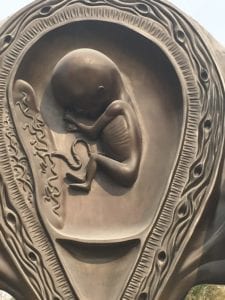
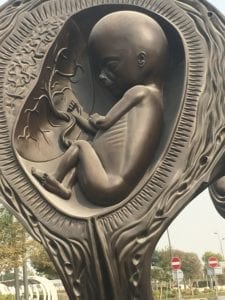
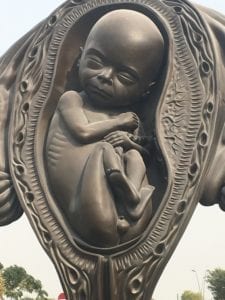

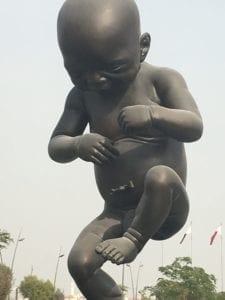
Damien Hirst, The Miraculous Journey, bronze sculptures, 2013
SALLY METZLER, PhD, is the director of the art collection at the Union League Club in Chicago.
Highlighted in Frontispiece Volume 11, Issue 2 – Spring 2019
